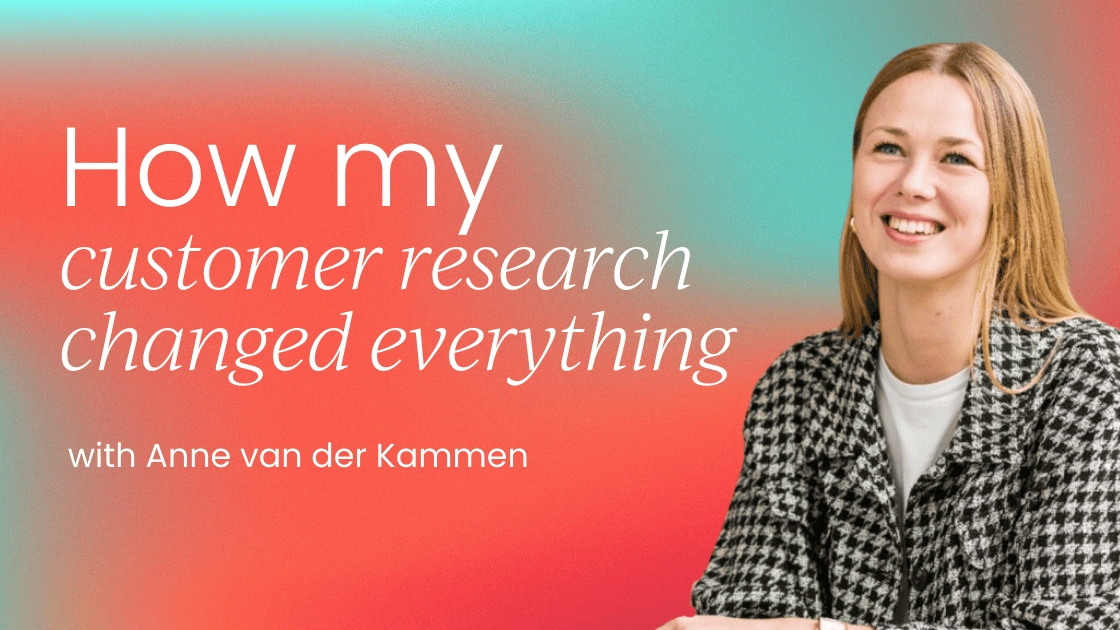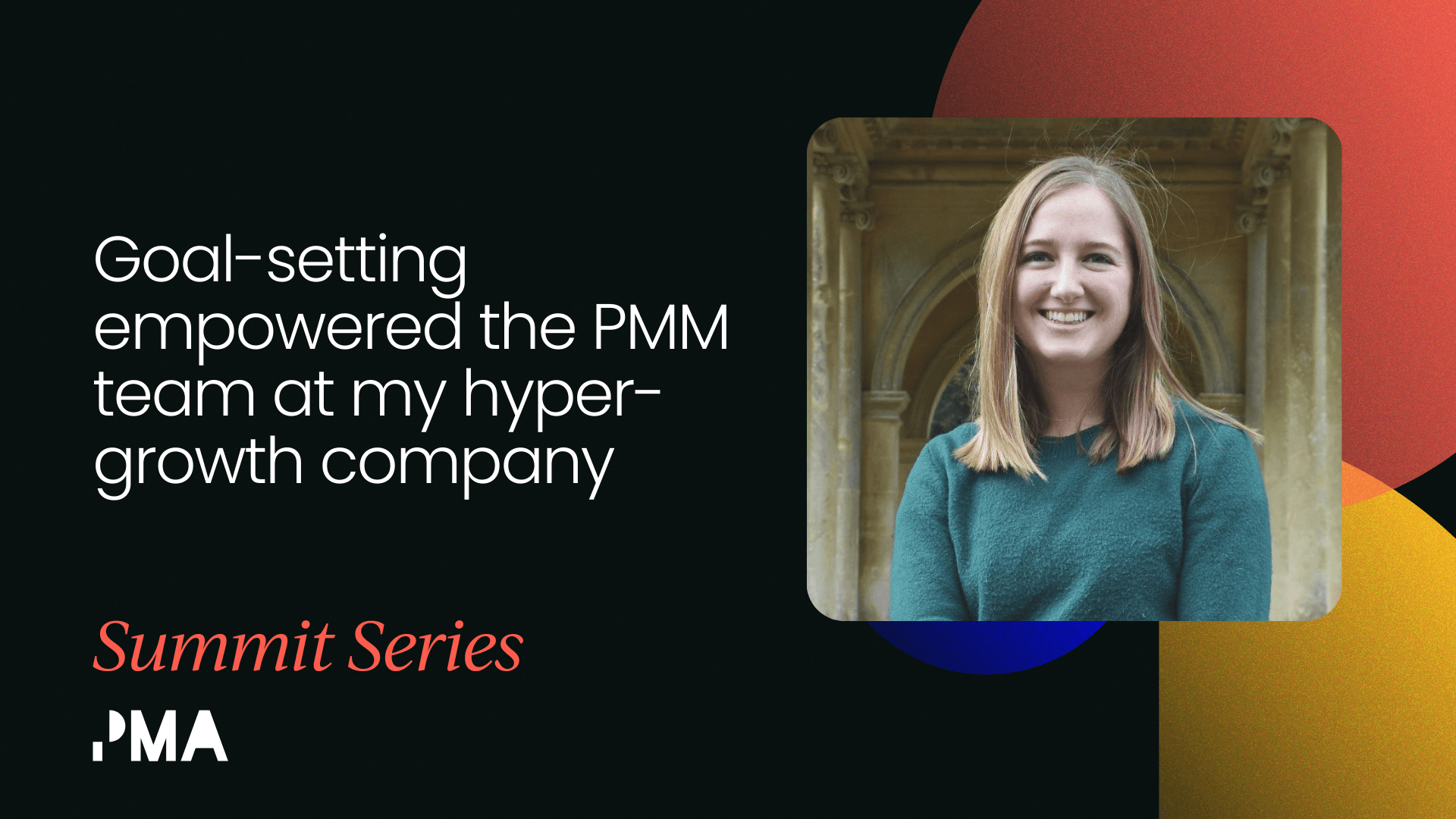
Every product marketer is told the same thing: “You need to know your customer.”
It’s the foundation of everything we do: building ICP profiles, shaping personas, crafting positioning, and writing messaging fundamentals.
But despite having all the right tools – dashboards, Gong calls, CRM reports, surveys, interviews – I realized something uncomfortable last year: I still didn’t really know the best-fit customer for the products I was owning.
Sure, I could find the basics of who was adopting a new product after launch: total number of customers, company size, maybe the top industries, if I was lucky.
But deeper insights, real characteristics, motivations, and buying triggers were much harder to come by. And the more data I collected, the less clarity I had. I wasn’t lacking information; in fact, I was drowning in it.
I’m sharing this story because I know I wasn’t alone, and many PMMs might still feel this way. This is a story about how I went from being a passive data consumer to a source of truth for our go-to-market teams.
It’s not a perfect blueprint, nothing fancy. Just a simple, structured approach that helped me focus and create better product marketing fundamentals. Hopefully, it will spark some ideas for you, too.
Stuck in analysis paralysis
I realized last year: there are two types of PMMs. Some (like me, for a while) sit in analysis paralysis, afraid someone will ask the simple question: “So… who’s our best-fit customer?”
And when they do get asked, their answers are often basic, based on dashboards they don’t fully understand, filled with biased answers or old information, which leaves them questioning their own response.
Others figure it out for themselves. They talk to customers, get the kind of insights that don’t show up in a dashboard, and suddenly they’re the ones leadership wants in the big meetings.
I knew which side I wanted to be on.
Here’s what flipped the switch for me
The transition from being stuck to taking action wasn’t a sudden burst of confidence; it was a slow, uncomfortable crawl that came to a head in a single, high-stakes meeting. I was there with the leadership team and all the heads of our go-to-market teams.
We were talking about the traction my product launch had, and how we could give it even more attention the next quarter by running an upsell campaign on lookalike customers.
You can probably guess what happened next. They turned to me and asked: “So, who exactly is our best-fit customer, and why are they buying?”
Despite all my prep, looking at every single dashboard and report I could find before the meeting, my answers were still shallow and full of bias. Ouch. I realized the data I had wasn’t good enough. To truly add value in these meetings, I had to talk to customers myself and find the answers firsthand.
A simple, structured approach that helped me focus
I stopped waiting for someone else’s research and started doing my own. Nothing fancy. No 50-slide research plan. Just a simple, structured approach that helped me focus.
I started seeing myself as a customer researcher. This mindset shift let me finally start asking the right questions. Instead of just consuming data, I began to ask myself: “What data do I actually need? Who should I be talking to? Why am I doing this, and what do I hope to find?”
It was a journey of discovery, not an overnight solution. But by embracing the role of a customer researcher, I knew exactly what to focus on and could begin the process of uncovering the “why” behind the data. Here’s the simple, five-step process that became my turning point:
Step 1: Start with a research plan
Start by creating a simple, one-page research plan. This isn’t a huge research project proposal; it’s a concise document to align your work with business objectives and your product marketing goals.
I found that getting buy-in from my manager was way easier when I showed them this clear, one-page plan. Including:
- Business objective: What broader company goal is this lightweight research supporting? Example: Increase company growth in ARR to 20% p.a.
- Marketing objective: What marketing (or other team) goal is this research supporting?
- Research objective: What is the research aiming to achieve? Example: Identifying [company name] Ideal Customer Profile (ICP).
- Research question: What specific question are you trying to answer through this research? Example: Who are Howspace’s best-fit customers and why, based on quantitative data analysis and SPICED (Situation, Pain, Impact, Critical Event, and Decision).
- Desired outcome: What decision, strategy, or action should the research enable? Example: A well-documented and actionable ICP that provides clarity and focus for go-to-market strategies based on quantitative and qualitative insights.
- Customer segment: Who is the research focused on?

Step 2: Review your existing data with your objective in hand
With your objective in hand, review your existing quantitative and qualitative data with a fresh set of eyes. Instead of just looking at the numbers, look at the quality of the data itself. Does it match the customer segment you’re researching? Can you correctly bucket the data?
Remember the “garbage in, garbage out” principle. If your data is poorly structured or missing key details (like an incomplete company size or an unassigned industry), it can lead you to the wrong conclusions. This step is about identifying what you have, what’s missing, and what needs to be fixed before you move on.
Step 3: Go get the missing data yourself
Now that you know what’s missing, it’s time to get it. I briefed the data team with my research objective, asking them to pull a list of customers based on specific criteria.
This sounds easy, but data teams are busy getting requests from every team. If you can’t get the data, don’t give up!
Yes, it’s a lot of work, but just try to do it manually for this one research objective. If leadership sees the results you get, I guarantee you’ll get the resources you need for your next project. I also did quite a lot of manual work to add the details I needed.
But once I had my list, I was able to schedule and interview 11 personas to uncover the “why” behind the numbers. It’s scary at first, and a skill you have to learn, but slowly, you’ll get great insights that will make you feel confident interviewing anyone.
Step 4: Add qualitative insights from your go-to-market teams
Don’t be afraid to get creative. If you’re lucky, you can filter and analyze recorded sales and customer success calls for specific customer segments using AI tools. This adds another layer of qualitative insight without needing new interviews immediately.
Just be sure you’re analyzing the right group and not mixing different customer buckets. Also, be incredibly mindful of what you prompt AI solutions with.
Especially if you’re going to use this data to inform C-level decisions, you need to build in checks and be able to actually trust the output. Otherwise, you’ll end up in the same spot you were before, not truly knowing if you can trust the insights you uncovered.
Step 5: Share your findings
The final step is to synthesize your insights into a clear, compelling narrative. My report wasn’t a long-winded document; it was a concise summary of my findings (after a lot of back-and-forth about the right structure).
I felt confident presenting to execs because my insights were grounded in data, backed by real customer voices (tip: you can use tools like Fathom to record your meetings and literally use customer voice notes in your report), and directly aligned with our business strategy.
Note: This is just the start. The best PMMs build a continuous research cadence. By regularly updating your information, testing your findings, and iterating, you’ll be unstoppable.
Confidence booster
Doing my own customer research didn’t just change my work; it changed how I saw myself as a PMM. Not as someone drowning in dashboards, but as someone with insights that mattered.
I felt confident presenting to execs. Confident shaping strategy. Confident that I wasn’t just digging my way through biased opinions anymore. I had the answers.
So what kept me stuck for so long?
Looking back, it’s pretty clear:
- Data & tool overload; none of it designed for product marketing;
- Secondhand insights; full of other people’ biases; AND…
- My brilliant idea of a massive research project that, shocker, nobody approved
The result was classic analysis paralysis. But that doesn’t have to be the case for you.
Start small. Be scrappy.
You don’t need permission or a PhD in research methods. Talk to customers yourself.
Because in the end, the real superpower of a product marketer is knowing your customer better than anyone else in the company. Maybe even better than they know themselves.
Want the practical cheat sheet? Or see how I leverage AI to analyze transcripts from my interviews? (spoiler: it’s not just copy-paste into ChatGPT). Make sure we’re connected on LinkedIn and send me a DM.



